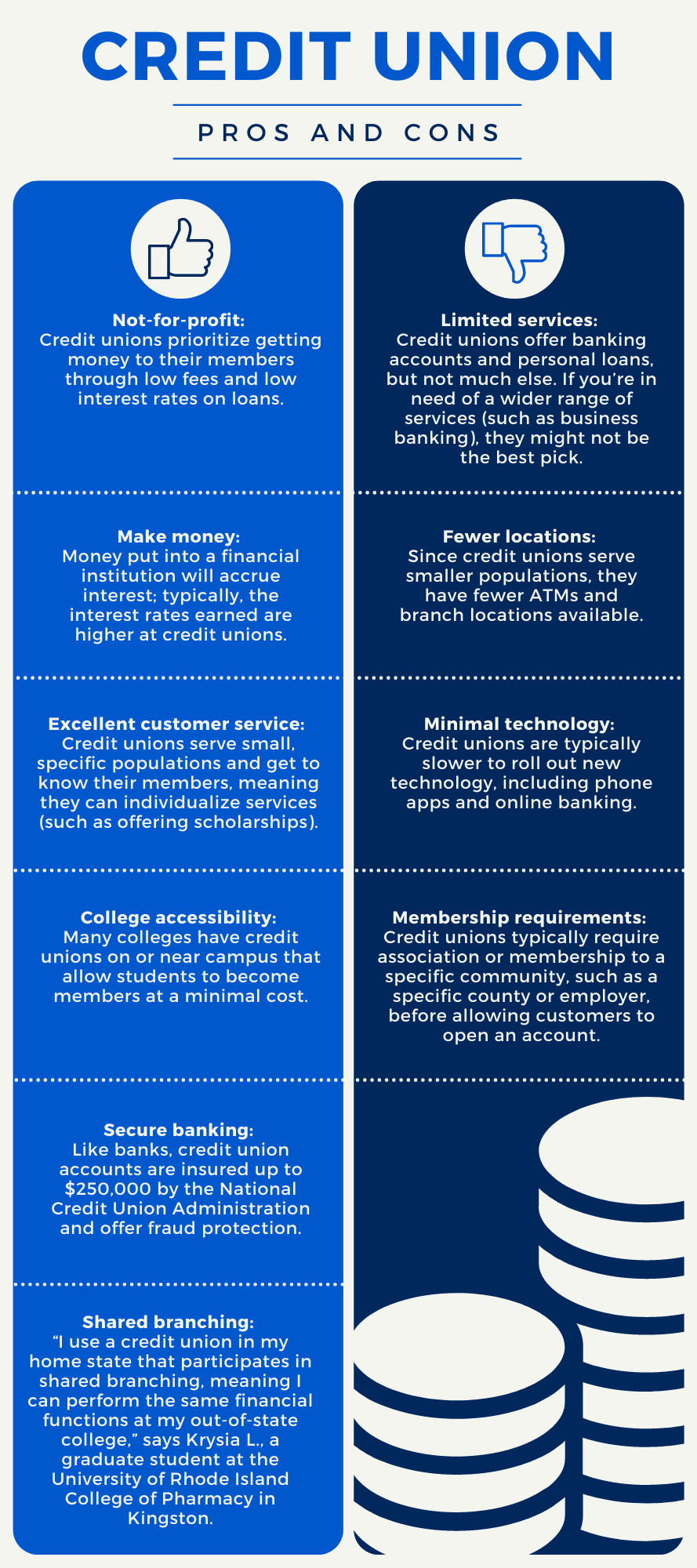The Ultimate Guide to Recognizing Credit History Unions

Credit unions stand as special economic entities, rooted in principles of common support and member-driven procedures. As we navigate through the ins and outs of credit unions, an informative trip waits for to drop light on these member-focused institutions and how they vary from standard banks.
What Are Credit History Unions?
Cooperative credit union are member-owned banks that provide a variety of financial services to their participants. Unlike typical banks, lending institution run as not-for-profit organizations, implying their main focus gets on serving their members as opposed to taking full advantage of earnings. Members of a credit union commonly share a typical bond, such as helping the same employer, coming from the same neighborhood, or belonging to the very same company.
One of the key advantages of lending institution is that they frequently provide greater rate of interest on financial savings accounts and reduced rates of interest on fundings contrasted to financial institutions. Credit Unions in Wyoming. This is because lending institution are structured to profit their participants directly, allowing them to hand down their incomes in the type of much better rates and less costs. In addition, cooperative credit union are known for their personalized customer support, as they focus on building relationships with their participants to comprehend their special financial requirements and goals
Background and Evolution of Lending Institution
The roots of member-owned economic cooperatives, understood today as debt unions, trace back to a time when neighborhoods sought alternatives to conventional banking institutions. The idea of cooperative credit union come from in the 19th century in Europe, with Friedrich Wilhelm Raiffeisen typically attributed as the leader of the cooperative financial movement. Raiffeisen founded the initial recognized credit union in Germany in the mid-1800s, emphasizing neighborhood support and self-help concepts.
The evolution of credit rating unions proceeded in The United States and Canada, where Alphonse Desjardins developed the very first lending institution in Canada in 1900. Soon after, in 1909, the initial U.S. credit scores union was created in New Hampshire by a team of Franco-American immigrants. These early lending institution operated the basic principles of shared support, democratic control, and participant possession.
Gradually, credit scores unions have actually grown in appeal worldwide due to their not-for-profit structure, concentrate on offering members, and using competitive monetary product or services. Today, debt unions play a vital duty in the financial industry, offering community-oriented and obtainable banking choices for services and individuals alike.

Subscription and Qualification Requirements
Subscription at a credit union is typically restricted to individuals meeting details qualification standards based on the institution's starting concepts and regulatory needs. Some credit score unions may just offer individuals who live or work in a particular location, while others may be customized to workers of a specific business or members of a specific association.
In addition, lending institution are structured as not-for-profit organizations, indicating that their main goal is to serve their members instead of create profits for investors. This concentrate on participant solution often converts right into even more individualized focus, lower fees, and competitive rates of interest on fundings and cost savings accounts. By meeting the eligibility standards and coming to be a member of a lending institution, individuals can access right here an array of economic product or services tailored to their particular requirements.
Solutions and Products Supplied
One of the key elements that establishes debt unions apart is the diverse array of economic solutions and items they offer to their members. Debt unions typically offer traditional financial solutions such as cost savings and examining accounts, lendings, and credit cards.
In addition, lending institution frequently provide convenient online and mobile banking alternatives for participants to quickly handle their financial resources. They might use advantages such as common branching, enabling participants to access their accounts at various other credit score unions throughout the country. Some lending institution likewise offer insurance coverage items like home, life, and automobile insurance to help participants protect their assets and enjoyed ones.

Advantages of Financial With Cooperative Credit Union
When considering financial institutions, checking out the advantages of financial with credit unions exposes special advantages for members seeking customized solution and competitive prices. Unlike huge banks, debt unions are member-owned and focus on structure solid connections with their members. Generally, financial with a credit score union can supply a much more individualized, affordable, and member-centric economic experience.
Final Thought
To conclude, cooperative credit union stick out as member-owned banks that focus on serving their members over making best use of earnings. With origins dating back to 19th century Europe, cooperative credit union follow concepts of mutual aid and member possession. They supply a range of financial product and services, including conventional financial services, financial investment choices, and competitive rate of interest. pop over to this web-site Membership qualification requirements specify and mirror a community-oriented approach, providing personalized client service and a member-centric monetary experience.
Credit history unions are member-owned monetary institutions that offer an array of banking solutions to their members. The idea of credit report unions originated in the 19th century in Europe, with Friedrich Wilhelm Raiffeisen frequently credited as the leader of the cooperative financial movement.The evolution of credit score unions proceeded in North America, where Alphonse Desjardins established the first credit scores union in Canada in 1900. Credit rating unions commonly supply typical banking solutions such as savings and checking accounts, fundings, and debt cards.When taking into consideration economic institutions, read this post here exploring the advantages of banking with credit history unions discloses one-of-a-kind benefits for members looking for tailored service and affordable rates.